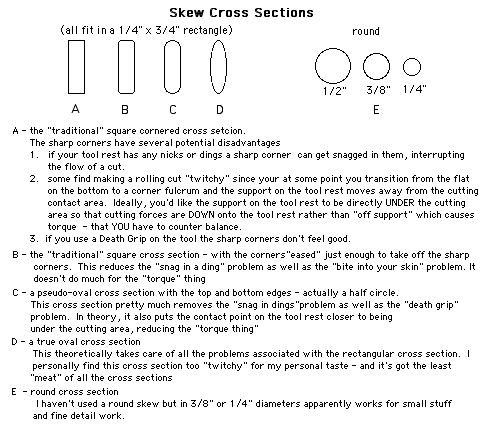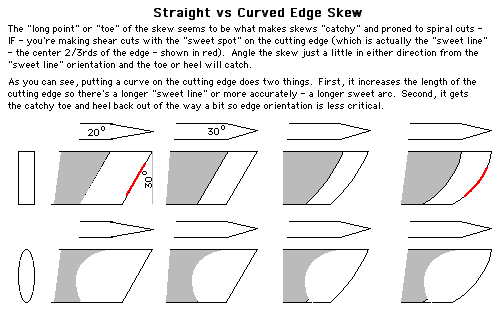The Misunderstood and Much Maligned SKEW
If there's one turning tool that seems to scare the hell out of newbies to turning - it's probably THE SKEW! This tool looks more like a weapon than a turning tool - with that long sharp point, the long, slanted, honed to a razor sharpness, edge - this thing's scary. And in the hands of a newbie to turning who just picks it up and tries to use it in a trial and error manner - the results are often nasty catches and / or a totally out of control spiral cut that runs half way back up the turning - threatening to do the same to a finger - or arm. There are horror stories in most wood turning forums on the internet and in usenet newsgroups about The Dreaded Skew and how "catchy" it is and how difficult it is to control.
HORSE PUCKY!
If you understand how it works, for different types of cuts (and it can do all kinds of cuts), AND put a slight curve on its cutting edge - it may become your favorite GO TO turning tool.
Skews come in a variety of cross sections, with different included bevel angles and "skewness" angles.
Let's start with the cross section- rectangular, oval or round - and look at the advantages and disadvantages of each. I preface what follows by noting that I have no experience with round skews, but have used all the other cross sections A, B, C and D. I was trained in engineering so I understand the mechanics of how a tool will work when cutting in terms of where forces are applied, where the fulcrum is located, moment/lever arms and the resulting torque you will have to counteract in order to maintain control of the tool.

And now let's look at the shape of the cutting edge.
